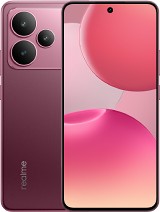Infinix Hot 60 alternatives
Tap above to see alternatives.
Poco M7 Plus alternatives
Tap above to see alternatives.
Infinix Hot 60

Infinix Hot 60
-
Dimensity 7020
6 nm
-
5200 mAh
18W
-
6.7"
720 x 1600 pixels
-
50 MP
1440p@30fps
- Specs
Poco M7 Plus

Poco M7 Plus
-
Snapdragon 6s Gen 3
6 nm
-
7000 mAh
33W
-
6.9"
1080 x 2340 pixels
-
50 MP
1080p@30fps
- Specs
2x2.2 GHz Cortex-A78
6x2.0 GHz Cortex-A55
2x2.3 GHz Cortex-A78
6x2.0 GHz Cortex-A55
8GB 128GB (UFS 2.2)
f/1.6, (wide), AF
+1 unspecified camera
f/1.8, (wide), PDAF
Auxiliary lens
1080p@30/60/120fps
f/2.0, (wide), 1/4.0"
f/2.0, (wide)
SIM1: Nano, SIM2: Nano
9 5G bands
n1, n3, n5, n8, n28, n40, n41, n77, n78
8 5G bands
n1, n3, n5, n8, n20, n28, n40, n78
In this performance comparison, the Poco M7 Plus with its Qualcomm Snapdragon 6s Gen 3 (6nm) performs better than the Infinix Hot 60 with the Mediatek Dimensity 7020 (6nm), thanks to superior chipset efficiency.
Poco M7 Plus offers 2 years of OS updates, while Infinix Hot 60 does not have confirmed OS update information. For security updates, Poco M7 Plus offers 4 years of support compared to Infinix Hot 60's 2 years.
Both Infinix Hot 60 and Poco M7 Plus use LCD screens. In terms of smoothness, Poco M7 Plus offers a higher 144 Hz refresh rate, ensuring fluid scrolling and animations. Poco M7 Plus also boasts a brighter screen with 850 nits of peak brightness, enhancing outdoor visibility. Notably, Poco M7 Plus offers a higher screen resolution, resulting in sharper visuals and more detailed content.
Poco M7 Plus features a larger 7000 mAh battery, potentially delivering better battery life. Poco M7 Plus also supports faster wired charging at 33W, compared to 18W on Infinix Hot 60.
Both phones feature the same IP64 rating for water and dust resistance.
¹ Scores can vary even with the same chipset due to RAM, thermals, and software optimization.










